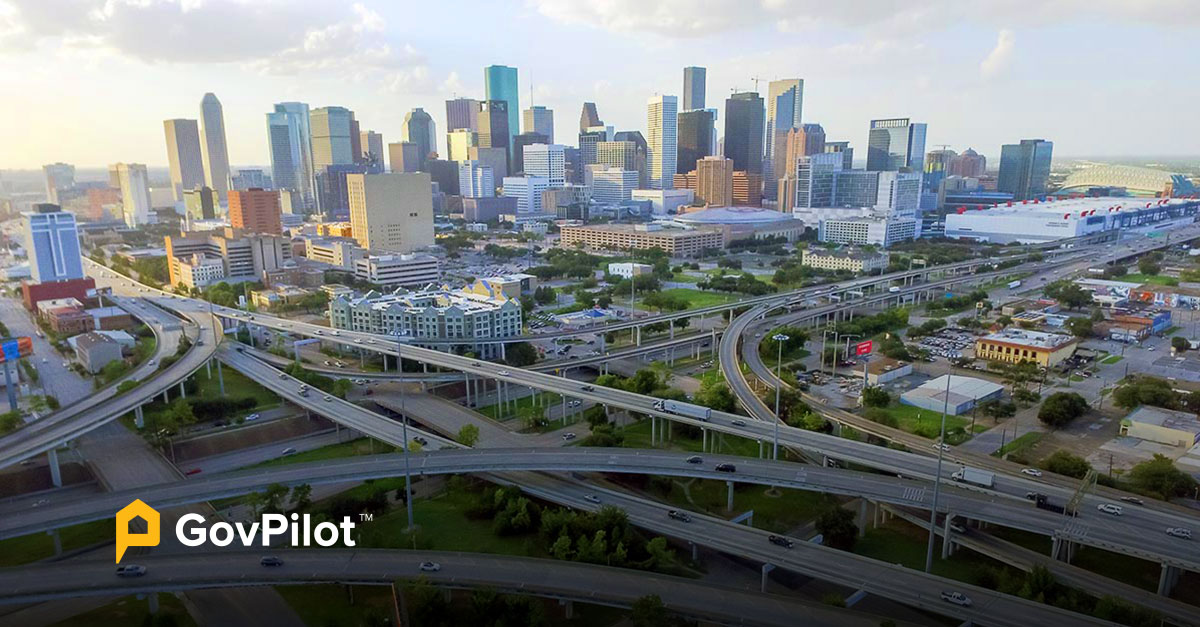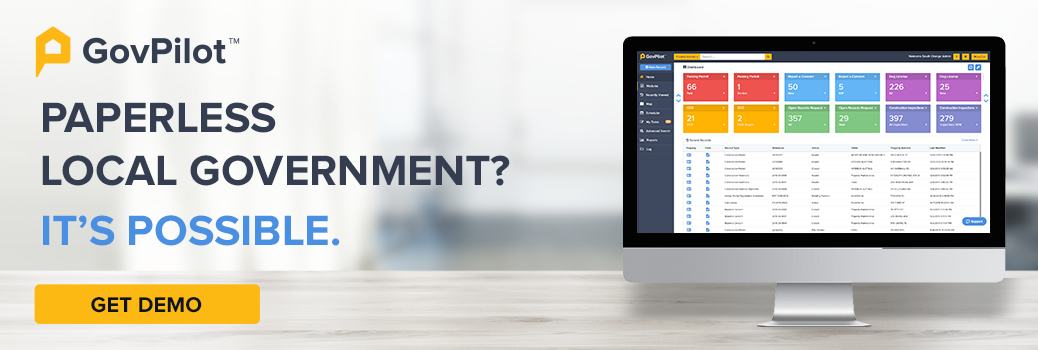US federal and state governments both recognize the key infrastructure developments needed to bring American physical and digital infrastructure to the modern world. They also recognize how difficult modernizing infrastructure can be with limited local government budgets.
As a result, federal legislation like the Infrastructure Investment and Jobs Act was passed to put infrastructure grant funds into the hands of state and local governments. Billions were allocated to Texas alone with its important role in the nation’s economy and growing population.
But how can Texas local governments take advantage of infrastructure grants? And which local infrastructure can be upgraded with grant funds? In this guide, we’ll highlight the designated dollars being allocated to each Texas infrastructure project type, and ways your local government can apply these funds efficiently.
How is the Infrastructure Bill Being Applied in Texas?
In May 2023, the Biden Administration released an Investing in America press release highlighting the critical infrastructure funds being allocated to Texas and the types of projects the grants are supposed to address.
“To date, $15 billion in Bipartisan Infrastructure Law funding has been announced and is headed to Texas with over 589 specific projects identified for funding. Since the [bill] passed, approximately $12.6 billion has been announced for transportation – to invest in roads, bridges, public transit, ports and airports – and roughly $1 billion has been announced for clean water in Texas. And, as of today, more than 1,359,000 households across the state are receiving affordable high-speed internet due to the Bipartisan Infrastructure Law.” Approximately $35 billion will be invested in Texas in total
Projects will continue to be announced as governments plan around their local infrastructure needs and grants are awarded.
What Types of Infrastructure Projects are Being Prioritized in Texas?
Follow along for specific insights into exactly how grant funds are being distributed and the ways local governments can maximize their grant dollars to fund important projects and get them done on time and not over budget.
Internet Investment
`“High-speed internet is necessary for Americans to do their jobs, participate in school, access health care, and stay connected. Yet nearly 25% of Texans do not have an internet subscription… Texas will receive a minimum allocation of at least $100 million to help ensure high-speed internet coverage across the state. Additionally, experts estimate that as many as 3,927,000 households in Texas are eligible for the Affordable Connectivity Program, which cuts internet bills by up to $30 per month, or $75 for households on Tribal lands, and provides a one-time $100 discount off a connected device.”
Learn more about the Benefits of Embracing Broadband Internet for Local Governments
Why Invest in High-Speed Internet in Your Community?
Texas is a booming state for business investment. Yet, if your community has terrible Internet service, not even your state’s tax-friendly laws will get businesses to invest in your community.
Local governments can use BEAD Rural Government Broadband Grants and other grants from the federal and state government to modernize computer systems for businesses and citizens in their community for local economic development, more job opportunities, and access to education. Not to mention, high-speed Internet means your municipality or county can embrace government software for workflow automation and secure public data storage.
GovTip: Investing in high-speed Internet and government construction software quickly will allow you to expedite future infrastructure projects more quickly with digital construction permitting and building inspection forms.
Transportation
“The Bipartisan Infrastructure Law makes the largest investment in public transit in U.S. history. Based on formula funding alone, Texas would expect to receive approximately $3.4 billion over five years… to improve public transit across the state. This funding will expand healthy, sustainable transportation options in Texas, where non-white households are 2.7 times more likely to commute via public transportation and 17% transit vehicles in the state are currently past useful life.”
$10 billion was also approved for Texas to prioritize clean public transit and school buses to promote, “cleaner air, reduced health risks, especially for children, and reduced greenhouse gas emissions.”
Additionally, to bring more local electric vehicle infrastructure into Texas, the state, “should expect to receive roughly $408 million in formula funding over five years to support the expansion of electric vehicle charging.”
Why Invest in Public Transit in Your Neighborhood?
Investing in public transit and community accessibility with maintenance of existing infrastructure as well as the development of new infrastructure can make it easier for Texans to travel around their beloved and vast state.
Adding train and bus routes as well as pedestrian zones and bike lanes can make it easier for your citizens to get around (even without a car) and have access to local public spaces, stores, and job opportunities.
Increasing access to your community for tourists from Texas and beyond can play a substantial role in your municipal local economic development efforts.
Roads & Bridges
“In Texas, there are 818 bridges and over 19,440 miles of highway in poor condition. The Bipartisan Infrastructure Law will rebuild our roads and includes the single largest dedicated bridge investment since the construction of the interstate highway system. Based on formula funding alone, Texas is expected to receive approximately $27.5 billion over five years in federal funding for highways and bridges.”
Why Should Your Local Government Invest in Physical Infrastructure?
Allowing roads and bridges to be in poor condition in your area means that you’re failing to keep the citizens under your watch safe. While America was once renowned for investing in globally recognized infrastructure, today the US infrastructure ranking continues to drop.
Investing in the modernization of roads and bridges in your neighborhood has to be a major component of your government strategic plan, especially if limitations in public transit leave your citizens with cars as their main travel option.
See our case study on how Bexar County, TX gets infrastructure projects done quicker with construction permitting software.
Disaster Resilience
“In the last decade, Texas has experienced 76 extreme weather events, costing the state up to $233 billion in damages. The [bill] makes a historic investment to bolster our resilience against pressing challenges like impacts of climate change, extreme weather events, and other hazards like [government] cyberattacks… To date, approximately $819.2 million has been allocated to Texas for infrastructure resilience”
How to Prioritize Disaster Preparedness in Your Local Community
Investing in government emergency management software and spending grant funds to mitigate against disasters like floods, tornados, fires, and winter storms (as Texans learned the importance of a few years back with the 2021 TX winter storm) and invest in disaster resilient infrastructure.
Here are helpful emergency management resources from GovPilot:
- Government Tornado Mitigation & Recovery Guide
- Government Flooding Mitigation & Recovery Guide
- Government Winter Storm Mitigation & Recovery Guide
- Government Wildfire Mitigation & Recovery Guide
- Government Landslide Mitigation & Recovery Guide
Water Infrastructure
“The Bipartisan Infrastructure Law represents the largest investment in clean drinking water in American history, including the first-ever dedicated federal funding to replace lead service lines and address dangerous PFAS chemicals…To date, $1 billion has been announced to Texas to provide clean and safe water across the state and improve water infrastructure.”
The bill also, “invests $17 billion in port infrastructure to strengthen our supply chains, address maintenance backlogs, and reduce congestion and emissions near ports– ultimately helping our country move goods more quickly and at lower cost.”
Why Do Local Governments Have to Invest in Water Infrastructure?
Your local health department needs to ensure that citizens are drinking and showering in clean water. Forge a local government water management strategy to protect and maintain local bodies of water and put proper water utility infrastructure in place for safe citizen consumption. Consider using public health department software to keep data organized and citizens safe.
Taking the time to modernize ports and water systems is needed as a crucial part of a government logistics strategy. Use digital boat ramp applications from GovPilot to get vessels using local bodies of water quickly.
Clean Energy Investment & Pollution Cleanup
“The [legislation] makes a historic investment to upgrade our power infrastructure by making the grid more resilient and building thousands of miles of new transmission lines to deliver clean, affordable electricity. The law also makes a historic investment in clean energy technologies like advanced nuclear, clean hydrogen, carbon capture, and batteries, as well as a historic $3.5 billion investment in weatherization”
As for pollution cleanup, the bill, “will deliver the largest investment in tackling legacy pollution in American history by cleaning up Superfund and brownfield sites, reclaiming abandoned mines, and capping orphaned oil and gas wells…To date, approximately $108.5 million has been allocated to Texas in 2022 and 2023 for capping orphaned oil and gas wells and reclaiming abandoned mine lands and $12.5 million has been allocated to cleaning up brownfield sites.”
How and Why Should Texas Governments Prioritize Pollution Cleanup?
Texas’ role as a leader in the energy sector means that local governments need to consider ways to keep the local air quality and natural resources safe for citizens and animals like endangered species.
If the aforementioned polluters are impacting your neighborhood, consider grants to cap orphaned oil and gas wells and clean up brownfield sites. Be sure to also consider ways that clean energy grants can upgrade infrastructure in your neighborhood while also protecting local public health.
Upgrade Texas Infrastructure Efficiently with Government Software
GovPilot government software offers solutions for every municipal and county department. Use grants to make your local government digital transformation with GovTech and cloud storage in every department. You can then leverage the software to expedite government workflows across infrastructure projects in your community.
To learn how GovPilot works, book a free demo.
Texas Infrastructure Fund FAQs
What Ways Can Texas Local Governments Upgrade Infrastructure?
The Bipartisan Infrastructure Bill included billions of dollars in grant funds for Texas alone, including for the following types of infrastructure:
- High-speed internet
- Roads and bridges
- Clean energy
- Airports
- Ports & waterways
- Public transit
- Disaster resilience
- Pollution cleanup
What Digital Infrastructure Should Texas Local Governments Use?
Government management software allows counties and municipalities to automate workflows and digitize infrastructure projects with online permitting and licensing applications and cloud-based public record storage. By investing in government technology first, all future infrastructure project workflows will be simplified and faster.
Read on:
- Building Inspection 101: Improve Government Inspection Workflows
- How Permitting Software Works
- Government Software Solutions Across Departments
- Parking Management Strategy for Local Governments
- Modern Local Government Engineering Strategy
- Modern Parks & Rec Department Strategy
Sources
- https://www.govtech.com/network/federal-government-to-pay-for-better-internet-in-texas
- https://www.washingtonpost.com/transportation/2021/04/30/us-infrastructure-ranking/
- https://www.preventionweb.net/news/intense-heat-waves-and-flooding-are-battering-electricity-and-water-systems-americas-aging
- https://businessintexas.com/why-texas
- https://www.texastribune.org/2021/11/09/biden-infrastructure-bill-texas/






